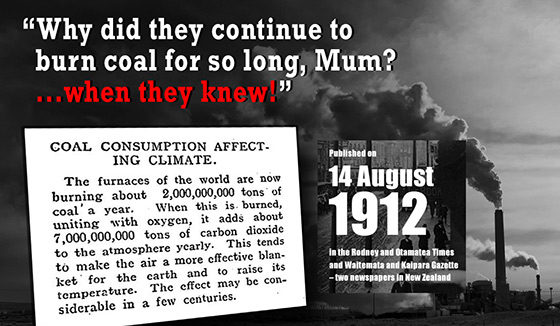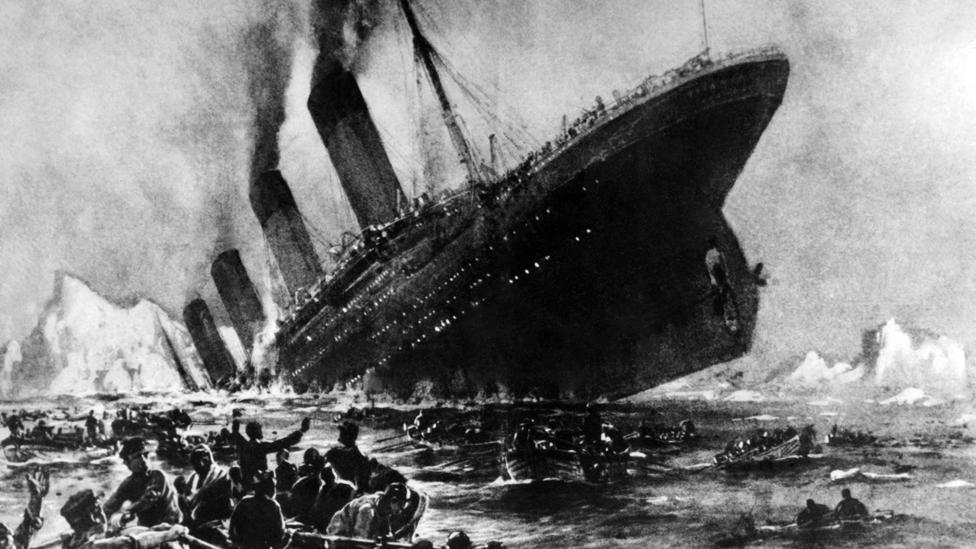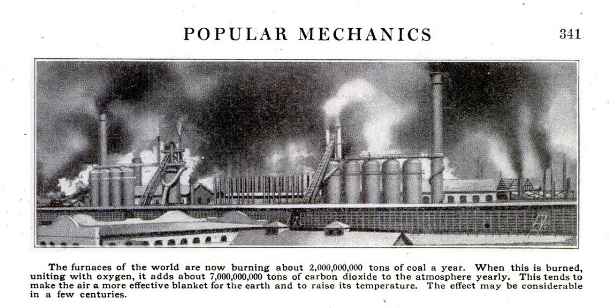
The headline and four sentences where a caption from the March 1912 issue of Popular Mechanics, where it appeared in an article titled “Remarkable Weather of 1911: The Effect of the Combustion of Coal on the Climate — What Scientists Predict for the Future”:
How come that such a clear understanding of the mechanisms relating to greenhouse gases existed in 1912, or that anyone back then would have suggested humans could play a role in altering their concentration?
The first person to use the term “greenhouse gases” was a Swedish scientist named Svante Arrhenius in 1896. In a paper published that year, he made an early calculation of how much warmer the Earth was thanks to the energy-trapping nature of some of the gases in the atmosphere. Even at this early stage, he understood that humans had the potential to play a significant role in changing the concentration of at least one of those gases, carbon dioxide (carbonic acid back then):
The world’s present production of coal reaches in round numbers 500 millions of tons per annum or 1 ton per km of earth’s surface. Transformed into carbonic acid, this quantity would correspond to about a thousandth part of the carbonic acid in the atmosphere.
Though he didn’t explicitly say in that paper that human activity could warm the planet, Arrhenius would go on to make that argument in later works. A 2008 tribute to Arrhenius published by the Royal Swedish Academy of Engineering Sciences stated that his ideas about coal and climate were popular and well known in his day but fell out of favor for a while after his death in 1927:
While Arrhenius’ prediction of warming received great public interest, this typically waned in time but was revived as an important global mechanism by the great atmospheric physicist Carl Gustaf Rossby who initiated atmospheric CO2 measurements in Sweden in the 1950s.
The conclusion must be that “greenhouse gases” – the global warming potential of burning coal- were known to both scientists and the general newspaper-reading public more than 100 years ago (!)







41 Comments
Pingback: Heatwaves and Fires Scorch Europe, Africa, and Asia - Bergensia
Pingback: แทงมวย
Pingback: สล็อตวอเลท
Pingback: swallow bbw
Pingback: Public Health Degree in Africa
Pingback: find more
Pingback: คาสิโนสด
Pingback: PG
Pingback: https://www.heraldnet.com/reviews/phenq-reviews-is-it-legit-update/
Pingback: Kardinal Stick
Pingback: ทางเข้า lsm99
Pingback: aksara178
Pingback: sex and toys
Pingback: superkaya88 online
Pingback: USA Gun Shops
Pingback: รับทำเว็บไซต์
Pingback: บาคาร่า
Pingback: SBOTOP Thailand
Pingback: sell drugs
Pingback: adult cams amount of tokens
Pingback: original site
Pingback: thailand tattoo
Pingback: Telegram中文
Pingback: หวย
Pingback: เช่ารถตู้พร้อมคนขับ
Pingback: nagatop situs scam
Pingback: เติมเกม
Pingback: namo89
Pingback: King Chance
Pingback: เช่าเครื่องปั่นไฟพังงา
Pingback: Mysbobet เว็บพนันออนไลน์
Pingback: CEO88คืออะไร?
Pingback: YUC
Pingback: คลินิกทันตกรรม ฉะเชิงเทรา ที่ไหนดี
Pingback: เครื่องทําสเลอปี้
Pingback: โรงแรมศรีราชา
Pingback: เว็บตรง สล็อต บาคาร่า
Pingback: r6 credit hack
Pingback: เครื่องเป่าแอลกอฮอล์
Pingback: สั่งของจากจีน
Pingback: เครื่องเป่าแอลกอฮอล์